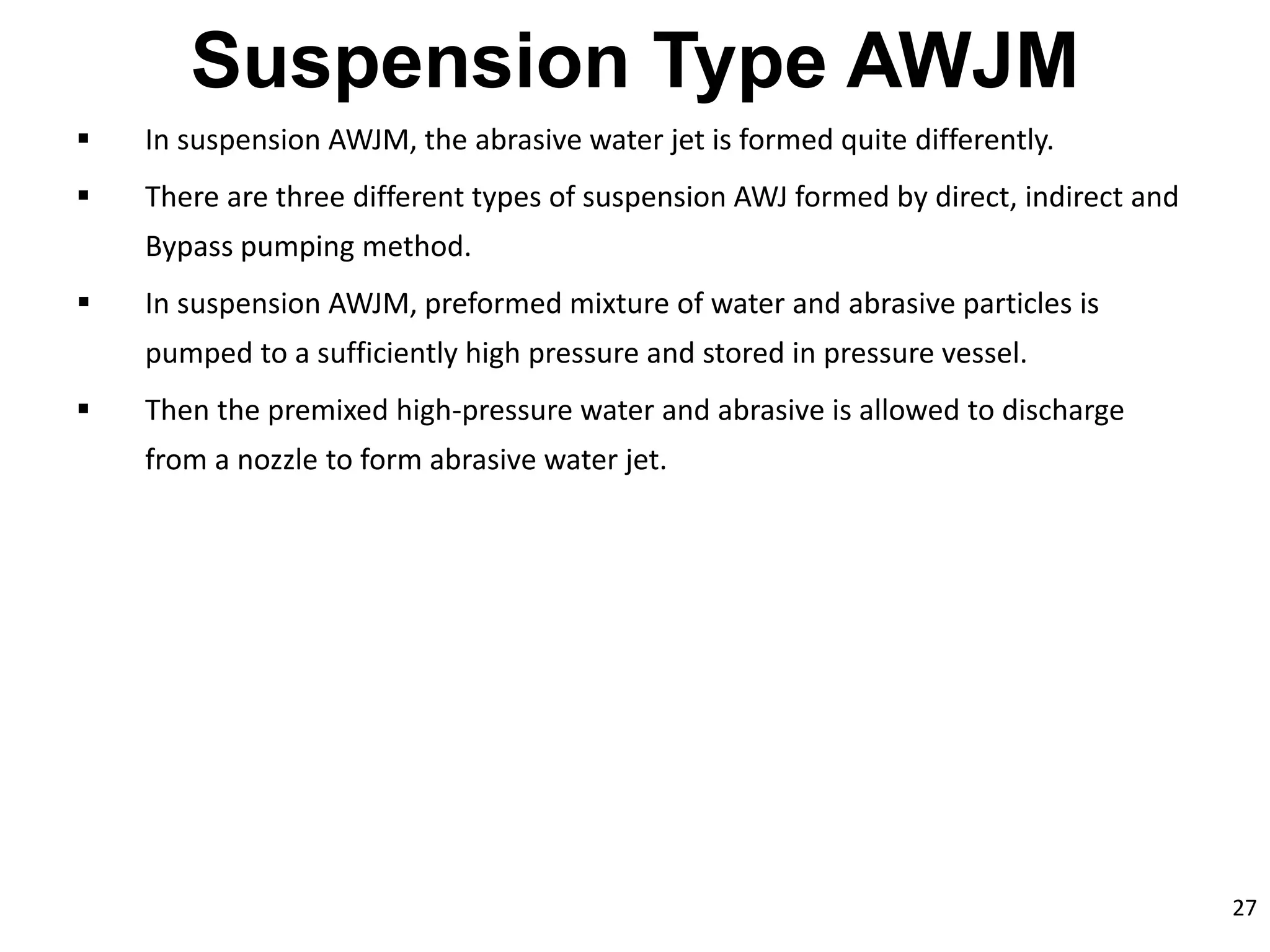The document discusses abrasive water jet machining (AWJM). It was developed in 1974 to clean metal prior to surface treatment. AWJM involves pumping water at high pressures of 200-400 MPa and passing it through a small orifice to create a high-velocity water jet. Abrasive particles are added to the water jet in the mixing chamber, becoming entrained and accelerating to cut materials 10 times faster than conventional machining of composites. Common abrasives used include silicon carbides and sand.










































